Made With High Quality Japanese Fruits! 7 Must Buy Souvenirs From Shinjuku Takano
Shinjuku Takano: Where the Appeal of Japanese Frui...
The word ‘market’ in English conjures up images of several small stalls where sellers from all around an area come to sell their fresh fruits and vegetables, meat and fresh fish, and other goods. But the word market in Japanese ‘ichiba’ has a somewhat different meaning. An ichiba is a place where professionals in different fields come to purchase these items sold directly by their producers.
This system is called ‘nakaoroshi’ in Japanese, and is a general distribution means by which these fresh foods reach the hands of the consumers via production auctions bid on by professional representatives of department stores and supermarkets.
In other words, a Japanese market is actually a professional workplace. The general public cannot participate in the biddings, but there are some markets like this that are open to viewings by the public. Why not add visiting a market like this to your sightseeing, to see a different side of life in Japan?
The biggest market in Japan “Ōta Wholesale Market” where 3,600 tons of fruit are traded a day

The most famous market in Japan is the fish market Tsukiji, but the “Tsukiji of fruit markets” is Ota Shijou, or Ota Market.
Ota Market covers a site spreading out about 400,000 square meters and trades roughly 3600 tons of fresh fruit per day.
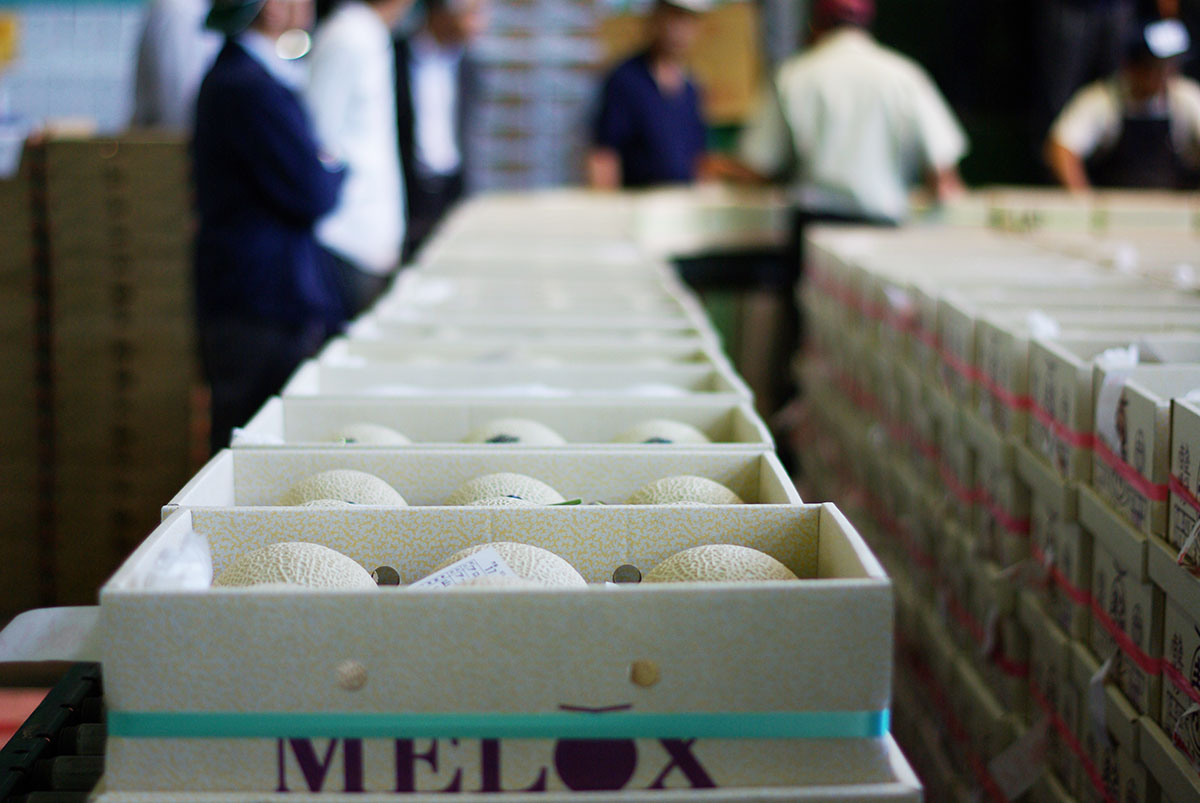
Bidding is the main event of the market. A professional who judges the quality of the fruit by sight and ascertains their quality works alongside a wholesaler before bidding on the auctions.
Prior to the start of the auction, the fruits that will be traded that day are laid out at the venue so that the pros can select which ones they’d like to bid on in advance. They strictly check the overall appearance and sugar content of the fruit, and select only those that meet the strict standards of the company that they represent.

The bidding starts at seven o’clock in the morning at the Ota Market Produce Building. Working in pairs, the bidder calls out in a loud voice, while the fruit professional remains silent and shows the amount of their bid with hand gestures.
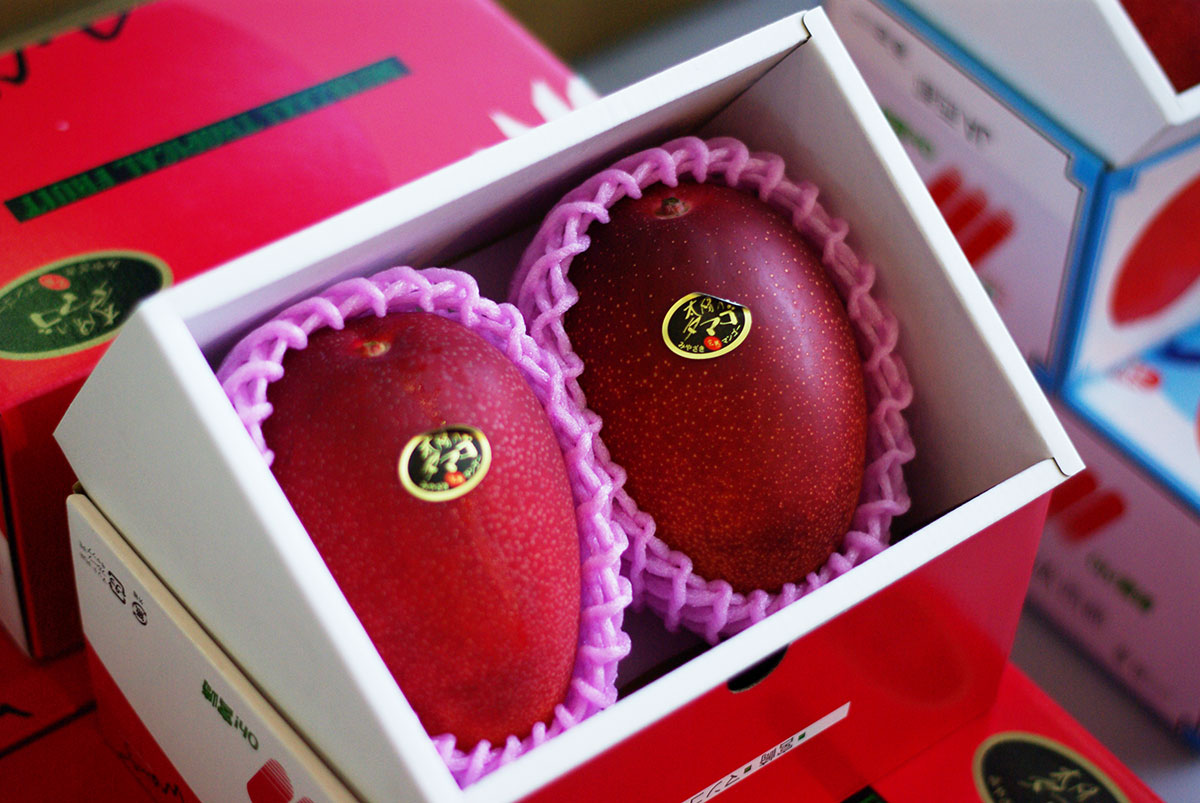
Bidding is done for each type of fruit. On this particular day, bidding was held on several luxury fruits, such as crown melons from Shizuoka prefecture and these mangos from Miyazaki prefecture.
The most perfect of the crown melons can sell for about 20,000 yen a piece, while one of these mangos goes for about 10,000 yen – which you can sometimes see if you visit the produce area of department stores.
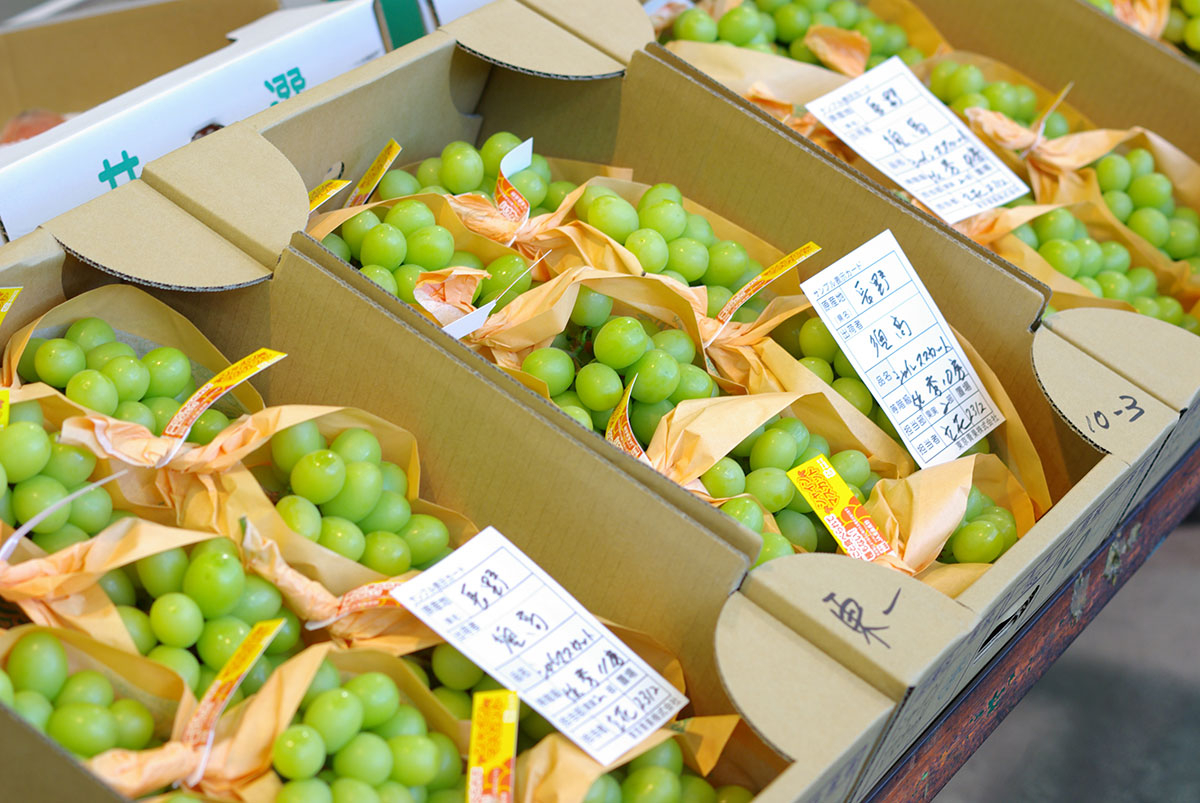
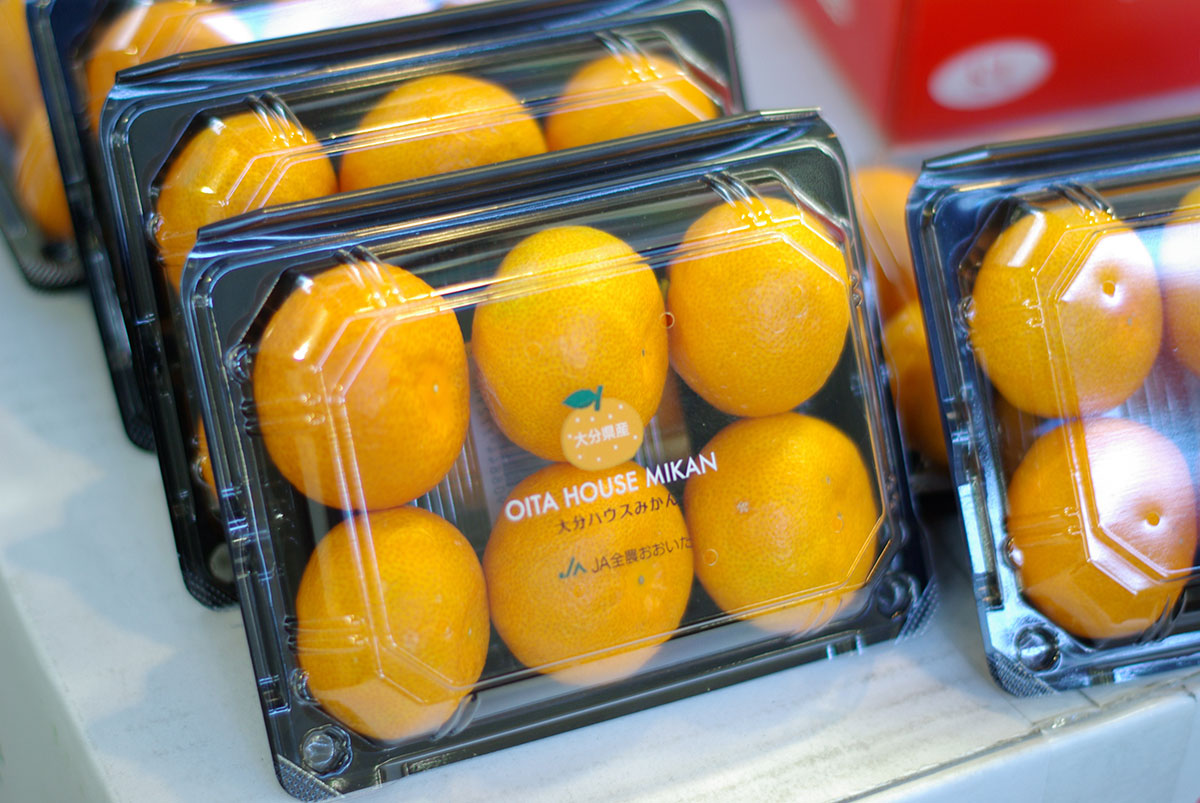
In the market tours, visitors can see the luxury fruits up close. Taking part in a tour like this to watch the bidding itself is a rare opportunity to learn more about the distribution of fruits in Japan.
Strawberries in spring, watermelons in summer, persimmons in autumn, and oranges in winter; the fruits offered for bidding at the market change seasonally so no matter when you visit, you will be sure to see the absolute freshest fruits possible.

After the bidding tour ends, you can take a look around the market as well. There are so many cardboard boxes in the building! All of them, of course, are filled to the brim with fruit.

One thing must see when visiting Ota Market are the massive refrigerators where all the fruit is stored.
There are 6 rooms in all, with a total capacity of about 3000 tons. Inside are dozens of cardboard containers holding strawberries and oranges and more. The fruits to be bid on that day are all kept in here.
Unlike a standard refrigerator, this one has no door. A turret truck moves freely about inside the refrigerator and, when you walk past the room, cold air leaks out of the open doorways.
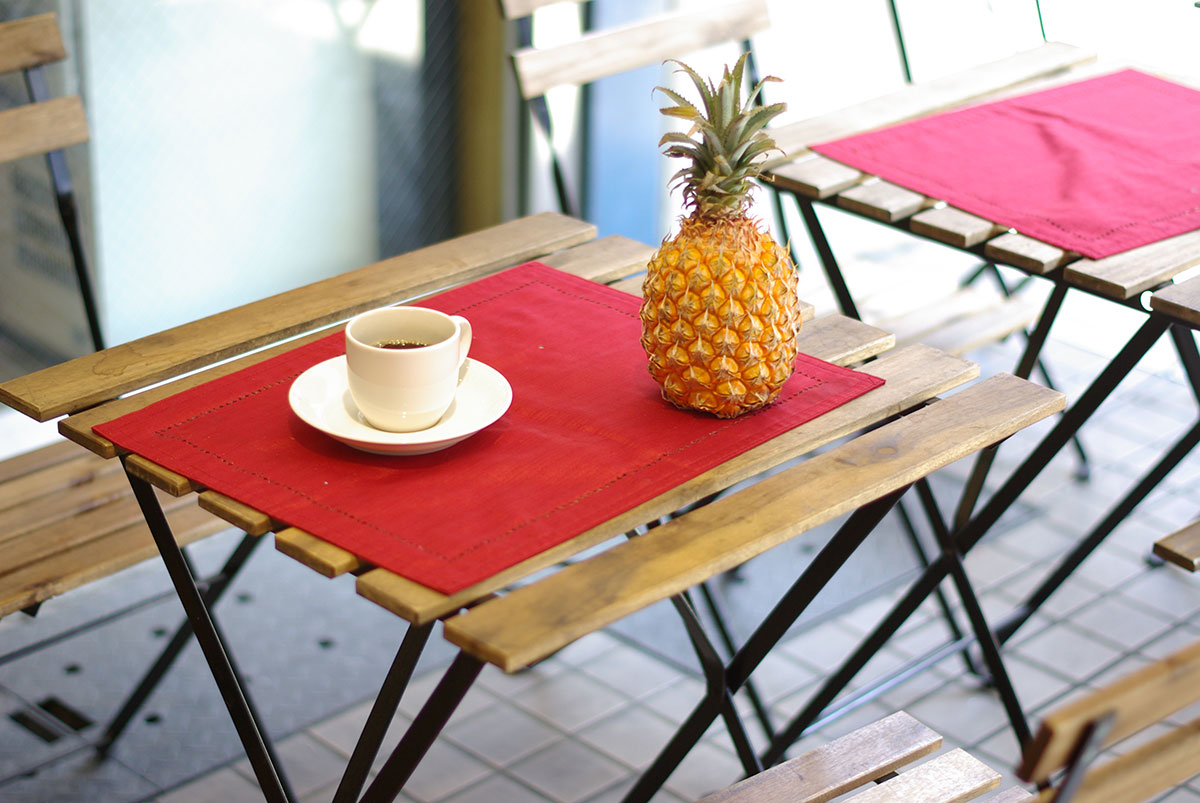
To fully see everything in the market will take about 1-2 hours, so if you find yourself getting tired, you should take a break at one of the onsite cafes or restaurants which are open to the public.
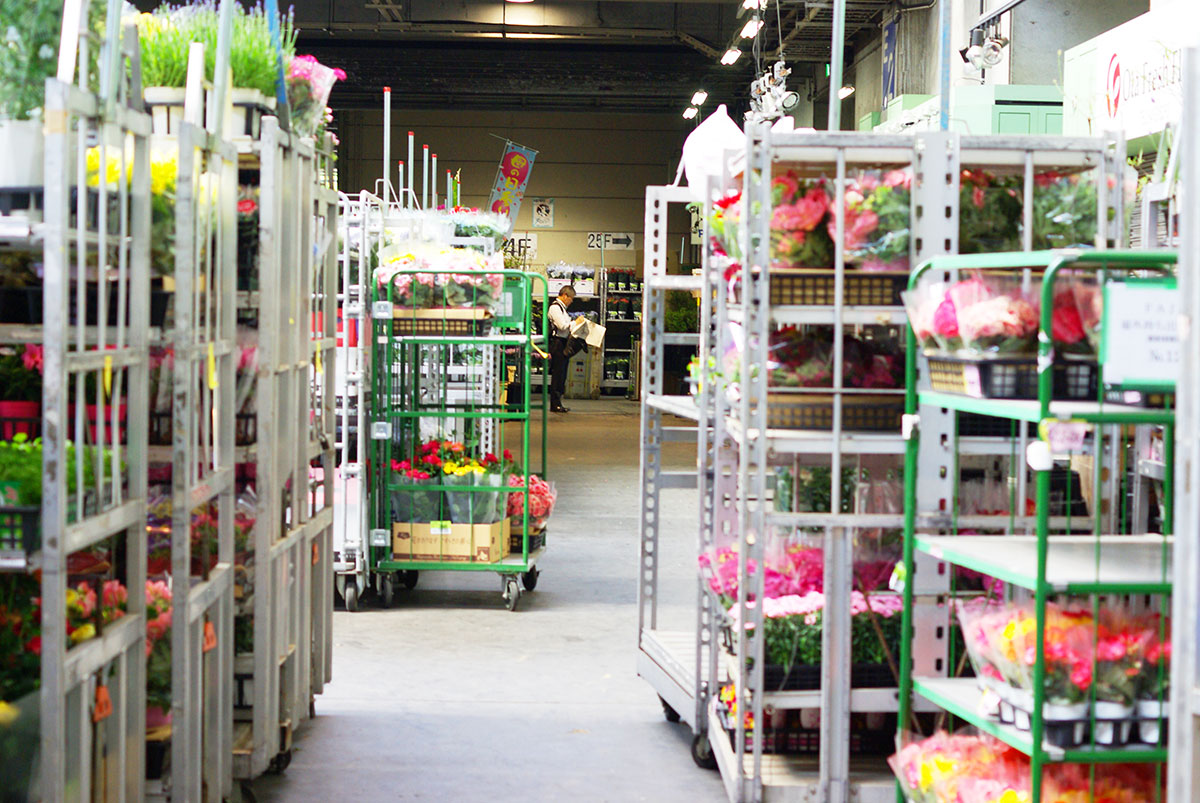
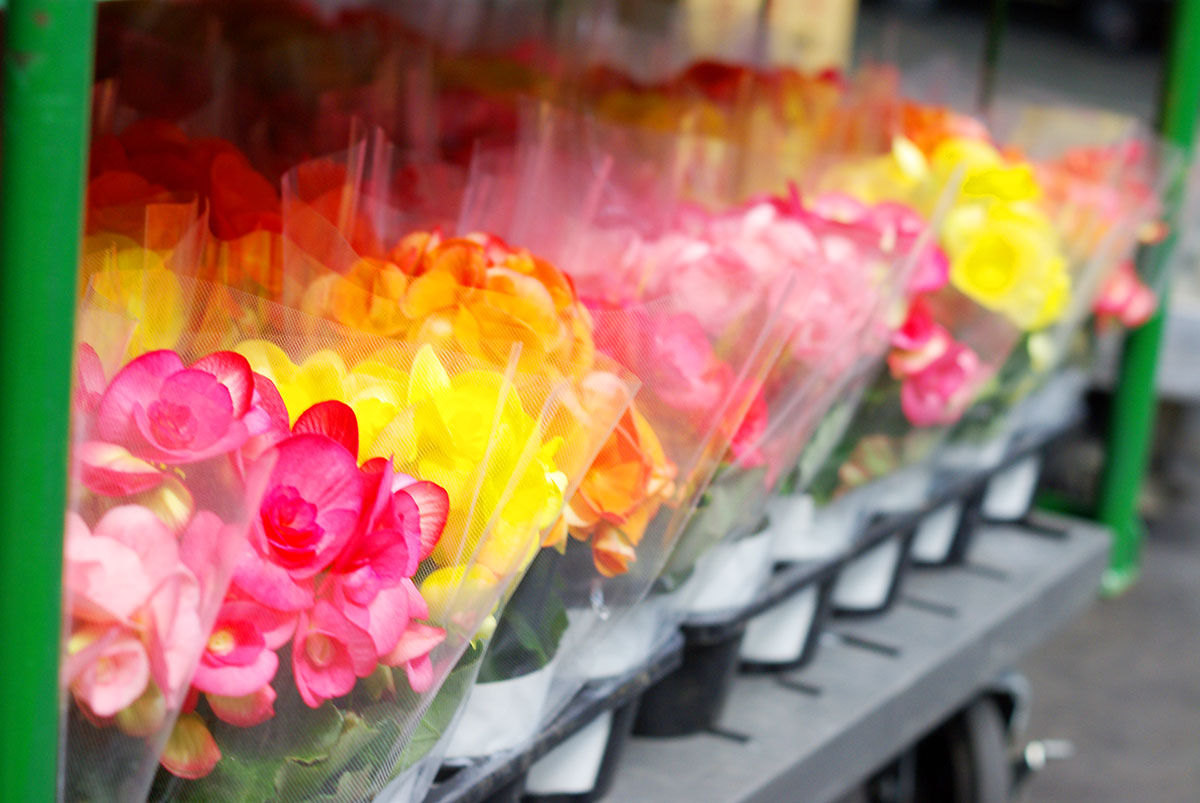
Ota Market is not just a fruit market – in fact, there are three sides to this facility: the fruit market, plus a fresh fish market, and a flower market. If you have a very open schedule, by all means please pay a visit to these facilities as well.
The flower market building is across the street from the produce market building. Here you will find rows upon rows of cut flowers and potted plants.
Just before major holidays like Christmas, New Year’s, Mother’s Day and so on, you will find even more flowers than usual available here. If you are interested in flowers, then this is a great place to check out.
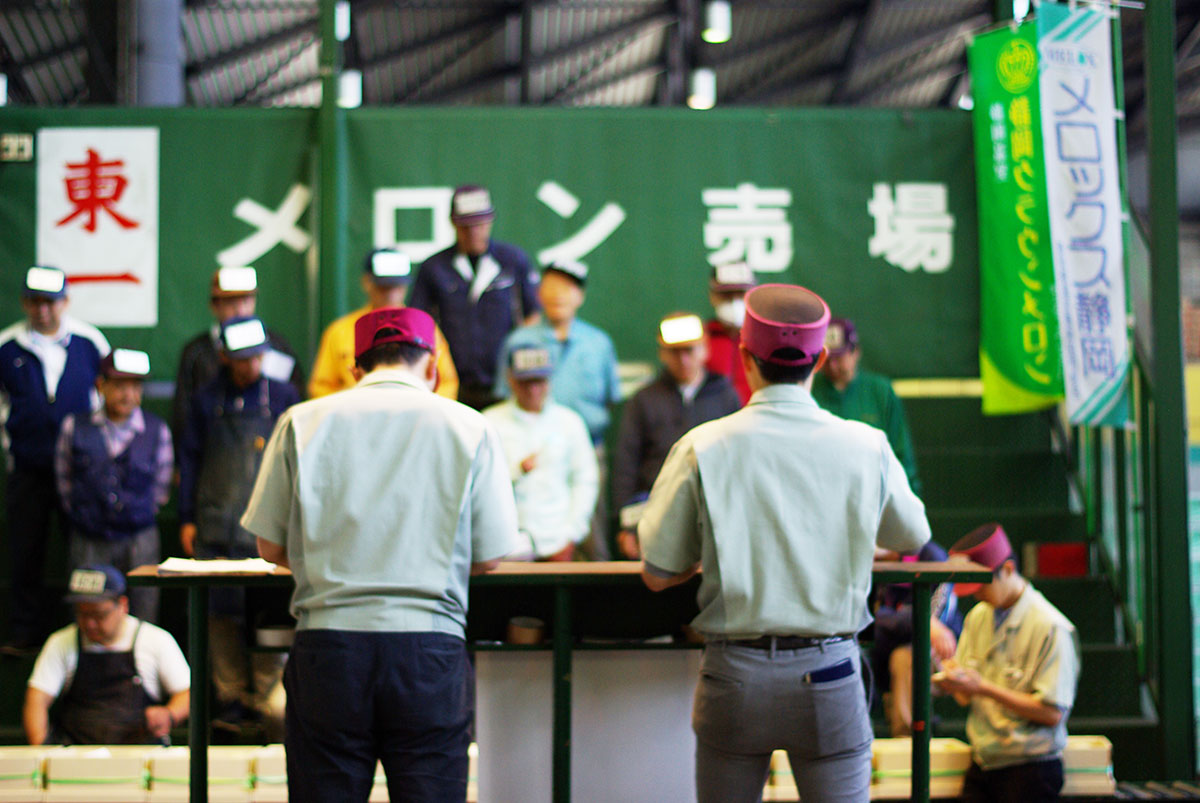
There are scores of people, trucks and turret trucks driving moving about through the market at all times, and as a workplace, priority is given to the vehicles, so make sure to stay out of their way.
The bidding starts at seven in the morning and ends around eight, so those wishing to see the auction take place should arrive early.
There are two types of toilet facilities available at the market: one is only for employees or those working at the market, the other is for public use. Employee washrooms are locked and cannot be used by the public for any reason.
The spacious Ota Market is sure to surprise first time visitors with its sheer size and the volume of fruit being handled there on a daily basis. With fresh discoveries like the unique bidding style of the auction and the massive refrigerator, this is definitely a place you’ll want to visit at least once in your life.
<Ota Shijo>
Address: 143-0001 Tokyo, Ota, Tokai 3-2-1
Hours: Open 24 hours, bidding from 7:00
Closed:Every Sunday, irregularly on Wednesdays
Wi-Fi:None
Credit Cards: Not available
Other Languages: Japanese only
Nearest Station: JR Shinagawa Station, JR Omori Station, Keihin Kyuko Heiwajima Station
Access: Take either the city bus from JR Shinagawa Station or the Keikyu bus for Ota Shijo from JR Omori or Heiwajima Station, and get off at the Ota Shijo bus stop
Phone: 03-3790-8301
** If you would like to take a tour of the facilities,you will need to make prior arrangements with the Ota Shijo by telephone (only available in Japanese).